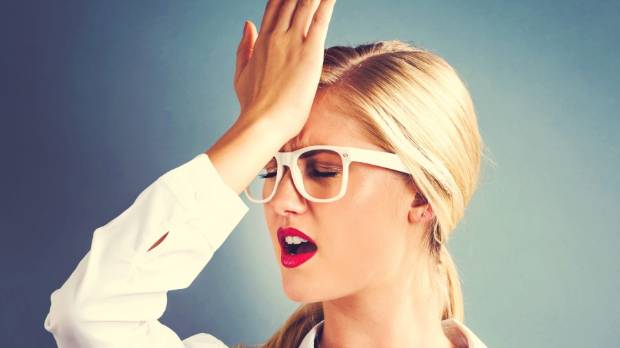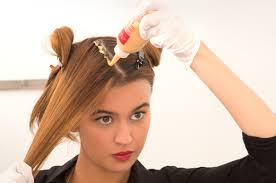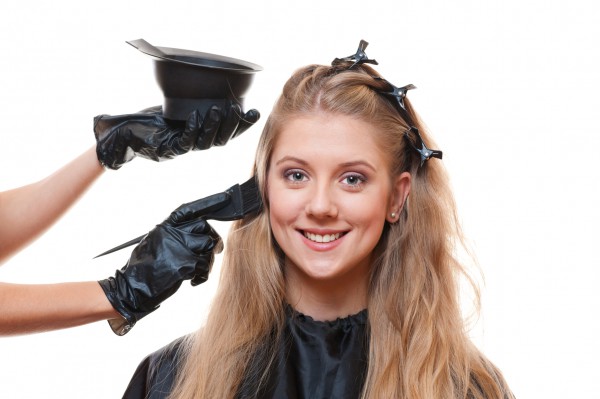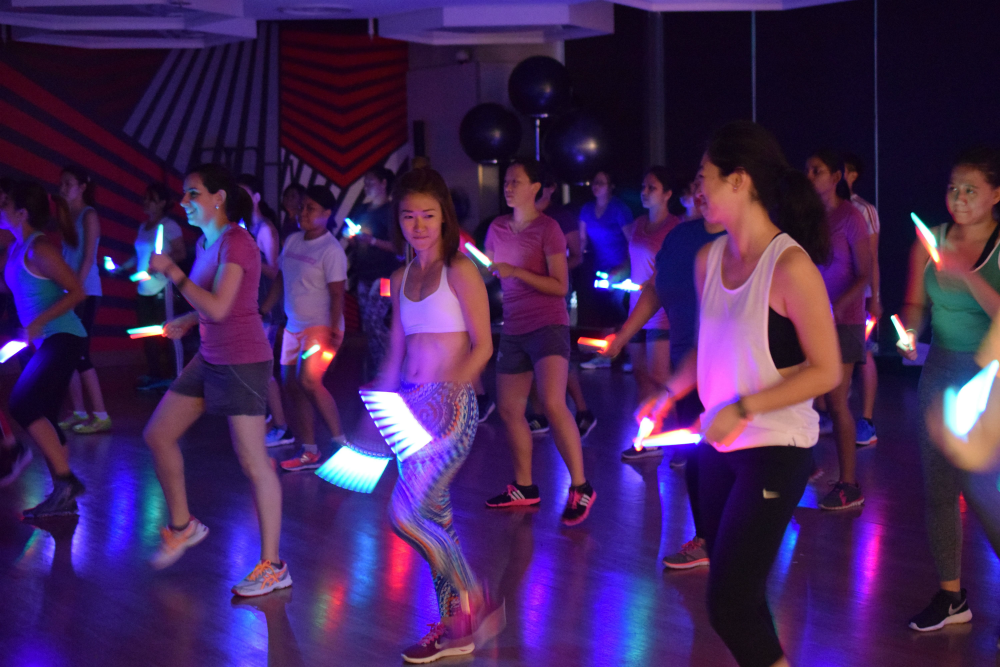
Is it Normal to Like Gross Stuff?
Posted by Editor on Jul 16th, 2018 in Lifestyle | 0 commentsAre you one of the thousands who watch pimple-popping videos on YouTube? Do you find earwax extraction videos just as satisfying? Or does watching people pull out ingrown hairs make you feel clean and all good inside?
It is easy to find these videos all over the Internet and maybe you’ve wondered a couple of times why you find them fascinating and mesmerizing. If you feel relaxed watching these kinds of videos even if most of your friends find them disgusting, don’t worry, because there is nothing wrong with you.

Feelings of Disgust
According to psychologists, this fascination for gross things both has biological and psychological imperatives. So, how are these two related to watching relaxing blackhead removal videos? Researchers claim that when our parents teach us disgust during early childhood, it is also a mechanism to protect us from harmful substances and bacteria that can make us sick. People associate physical symptoms like bumps, nasty odors, wounds, rashes, and others with sickness; and the first reaction we are taught to do is to avoid them.
Psychologists point out to the arousal value of disgusting things, but here arousal dos not just refer to intimate encounters with a partner. Arousal is just the term for exhibiting excitement such as a faster heartbeat or faster breathing. However, the feeling is not always negative, because there is also a positive side to arousal that our brains can read as reward or pleasure.

Add to that the natural human curiosity to know about things. If you’re not averse to the sight of blood on a nasty wound for example, that does not make you a sadist or a future serial killer. And with the ease of finding videos on almost any subject on the Internet, you will no longer feel the same disgust that you are supposed to feel when you see the object right in front of you because you’re safe from having contact with it.
Bile Fascination
Another term used in the Internet is bile fascination, which refers to the feeling of being repulsed and fascinated at the same time. Maybe you know some friends who are never grossed out with terrifying horror scenes and would even comment that it was not as bad as some equally gross scene from another movie.

For these people, they know they will be looking at some horrible stuff that most people have no stomach for, and yet they are also curious about why it was so gross in the first place. It’s like the opposite of wanting to know how brilliant a movie is after reading so many positive reviews. It turns out that bad publicity does work for a lot of people as well. There is a natural curiosity for some who want to know how bad a thing is.
And, hey, maybe you were guilty once of sharing a disgusting video on social media, knowing a lot of people are more interested in it, than say, videos showing altruism.
What’s in Your Eyeshadow?
Posted by Editor on Jul 16th, 2018 in Beauty | 0 commentsOne of the best ways to bring out the beauty of your eyes is through the application of eyeshadow. With so many colors and techniques nowadays when it comes to makeup, it’s not possible to transform into anything you want as long as you have the right skills. Part of your makeup skills, however, should be the information on the history, ingredients, and different application techniques of the eyeshadow.

How it Started
The earliest recorded use of an eyeshadow was found in ancient Egypt, where figures were depicted using kohl on their eyelids. The kohl, which is still used today, were made from lead, ochre, copper, chrysocolla ore, antimony, malachite, ash, and almonds.
The Greeks later used other ingredients to create various colors such as blue and green, while the Romans used materials, usually from stones and minerals, that would shimmer. Eyeshadow from Babylon and India also used plants, flowers, herbs, bird droppings, flour, and crushed stones to create a variety of colors. However, it wasn’t until the 1920s when cosmetic companies began creating safe eyeshadow.

The Common Ingredients
Despite the availability of safer ingredients to create makeup, some people still have allergies or adverse reactions to some of the ingredients. Unfortunately, the only way to know if a product is good on your skin is through a trial-and-error process. If you have sensitive skin, however, you must read the ingredients on the label before you try anything. After all, the eyes are one of the most sensitive parts on your body and it can serve as an entry point for harmful chemicals.
Most eyeshadows today are made from basic ingredients such as, the base filler (talc, mica, or kaolin clay), binders (magnesium or zinc), pigment, preservatives (glycol and tocopherol), and others such as nylon, silica, boron nitride, dimethicone, and bismuth oxychloride. However, cream eyeshadow and powder eyeshadow ingredients also differ slightly. Most eyeshadows contain one of the following: shea butter, beeswax, jojoba oil, castor oil, and silicone.
Some of the toxic ingredients you need to avoid are the following: bismuth oxychloride, aluminum powder, coal tar, formaldehyde, parabens, Nano particles, thimerosal, and talc. Look instead for the following ingredients: mica, iron oxides, zinc oxide, and titanium dioxide. Fortunately, there are beauty products that sell makeup for sensitive skin and allergy-prone skin, so you need not give up makeup altogether.

Proper Use or Application
If you have a huge eyeshadow palette, you might be wondering how to use them best. Besides experimenting with different color combinations, there are basic rules that you always need to remember.
• Apply a darker shade of eyeshadow near or towards the outer corners of the eyes to give depth.
• Blend properly by blurring the border between the natural skin color and the eyeshadow.
• Apply light colors first over the whole eyelid.
• Then, blend intermediate colors beginning with the outer corners of the eyes. The inner corners should only have lighter colors.
• Lastly, apply darker colors near the lower and upper lash lines and the outer corners of the eyes.
5 Tips to Color Your Hair Like a Pro at Home
Posted by Editor on Jun 22nd, 2018 in Beauty | 0 commentsIf you don’t have the luxury of time to sit for four hours in a salon to have your hair dyed, then you’re probably thinking that coloring your own hair at home is the best way to go. Well, it should be, as long as you follow these important hair coloring tips.

1. Do Not Trust the Photo On the Box
The photo on the box can be deceiving. Read the description and see swatches instead. You can also search it up on Google to find photos of actual hair color of a certain hair dye brand. Also, do the necessary research to find out what certain terms, like ashy, golden and blonde, really means and how they differ. You will also encounter words like ‘undertone’ and ‘shades,’ so make sure to read up before purchasing a box.
2. Match Your Skin Tone
This is the trick to get the most suitable hair color and to avoid color wash-out after rinsing your freshly dyed hair. According to hair experts, if you have fair skin with a hint of pink undertone, cool tones work well on you. For people with yellow undertones and lean toward medium to dark skin tone, warm shades of hair color look gorgeous on you.

3. Reds are Tricky to Pull-Off
Red is a fun hair color, especially if you want to shake things up a bit. However, make sure to choose the right red for your hair. If you want a coppery red result and your hair is quite blonde, go down at least a shade darker, or else you’ll end up with pinkish or orangey colored hair. If your current hair color is somewhere between hazelnut to medium brown, go up a shade, or you won’t notice any change at all.
4. Read and Strictly Follow Instruction
When dying your hair at home, it’s important to read everything on the label and follow instructions from start to finish. Read and understand what’s stated on the box; don’t just wing it. Get yourself a timer and maybe a little help from someone to help you apply the formula. Leaving the hair dye on your hair for too long or cutting the process short can undermine the results majorly.

5. Condition Your Hair Afterwards
Once the timer goes off, rinse out your hair without shampoo (or if the box contains a rinsing shampoo, use it). Use your fingers to scrub your hair from roots to tips. Then, rinse it all off and watch the water until it runs down clear. Finally, and most importantly, condition your hair. There is usually one included in the box. Since your hair was soaked in chemicals, it is in dire need of conditioning.
It can be challenging to dye your own hair at home. But if you simply read and follow the instructions, and perhaps do a bit more of research, you will surely get the color your want for your crowning glory.
3 Fitness Classes to Smash Your Fitness New Year’s Resolutions
Posted by Editor on Jun 22nd, 2018 in All About Singapore | 0 commentsTo those who have just decided to live a more active lifestyle, the gym can be an intimidating place. It’s filled with so many people who have the same goal as you, and the gym can only accommodate so many people at the same time. Especially during the first few weeks of the New Year, gyms tend to be full of people with the same New Year’s resolutions as you. But how do you still achieve your goal, and not get stuck waiting forever for your turn on the elliptical? The answer is fitness classes! It’s a much more practical (and cost-effective) to reserve a spot for you in a class that can cater your specific fitness goals. It even opens up more options for exercising; from yoga mats to underwater, fitness classes can help you achieve your fitness goals, tailored exactly to you.

1. Pulse, powered by Clubbercise
For those who love dancing the night away, why not do so while getting a good workout? Pulse is a dance fitness concept that combines energetic dance moves and cardio. While dancing to hits from the 90’s to the modern day, you can tone your entire body from head to toe. Each class lasts an hour and is led by fitness experts that can give you a healthy and safe workout. Pulse also hands out glowsticks that you can wave around while doing your workout, which completes the nightclub look and gives your arms a great toning. These classes are held at Tanjong Pagar every 6:30 pm; all you’ll need to bring are workout clothes, good shoes, water and a towel.

2. Ritual Gym
Ritual Gym is the perfect gym for busy-bodies who still want to be active. All you need is 30 minutes and Ritual Gym can guarantee an effective and safe workout for you. Science says that all you need is a good workout for twenty minutes, and Ritual Gym can help you make the most out of those twenty minutes. Your workout will consist of a combination of strength training and cardio, giving your whole body a workout. After your workout, shower and change in one of their private cubicles, grab one of their fresh and healthy smoothies from their fuel bar, and you can be on your way to other priorities all under thirty minutes. You don’t even need to bring anything, as Ritual provides all the materials that you need (you can even train barefoot!)

3. Aqua Cycling by Aquaspin
Aquaspin adapts land-based exercise programs and puts them in the water. Aqua cycling lets you do your usual cycling exercise routine, but submerged partially underwater. With the pressure of the water pushing down on your knees, you could get a good and safe workout that is both soothing and healthy. For those who have never tried water aerobics before, you could find a sport that you’re familiar with, like cycling, running, and aerobics, and try the underwater version provided by Aquaspin.
4 Secret Tips and Tricks for Troubleshooting Electrical Problems at Home
Posted by Editor on Jun 7th, 2018 in Home | 0 comments
Even though Singapore is one of the best countries in the world, power outages can still happen, and these can happen because of many reasons.
If your home’s and your neighbor’s home appears to have lost power to theirs, you may need to call a licensed electrician to find out what the problem is.
However, if your home’s electrical works aren’t working even though your neighbor’s is, the problem may be somewhere in your home that you need to know first before calling an electrician to fix it.
Here are a few tips and tricks for troubleshooting your home:
1. Fixing a circuit breaker
A lot of homes and apartments have a certain limit in terms of power output, and to protect against a fire hazard, circuit breakers trip and shut off the flow of electricity. If they trip often, this might be a sign of current overflow.
If a breaker is in the middle position (indicates that the breaker has tripped), push it completely to the side that indicates “off” to reset it.

2. Your lights are too hot
If your lights are too hot, there’s a good chance that either the bulb’s wattage is too high or that the insulation is too low. In either case, this problem could pose a significant hazard if you’re not careful.
Be sure to check for excessive heat coming from your lights regularly. If there are, contact an electrical wiring expert as soon as possible.
3. Unusually dim/bright lights
There are two likely reasons why some lights may seem excessively bright or excessively dim compared to the other lights around the house: it may be that the bulbs have different wattage, or that the main connection is bad.
If the cause is the former, check and see that all bulbs have the same wattage. If it’s a bad main neutral connection, call an electrician services as soon as possible.

4. Electrical surges
A lot of things can cause electrical surges, whether they are lightning strikes, damage to power lines, or even bad electrical wiring in your home.
While actual electrical surges only lasts a microsecond, they can damage your home’s electrical wirings and decrease their shelf life. To avoid this, replace any circuit boards or electrical devices that are cheaply made.
Avoid doing electrical repairs unless you are a good electrician or are knowledgeable about how they work. If you have to, be sure to follow safety precautions, the first of which is to avoid work on live wiring and always make sure you are insulated before proceeding.
As much as possible, it’s best to call an electrician services in Singapore to work on your electrical problems at home.
